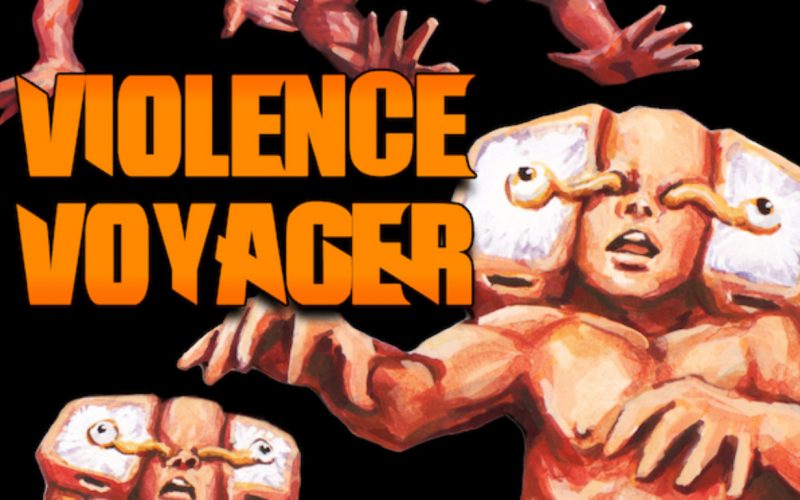Violence Voyager (2019).
Nowhere else have I found sound design that’s made me so intensely uncomfortable as in Violence Voyager, and that’s the least of it. This nightmarish Japanese animated film has a style that’s likely to alienate many. Still backgrounds and characters with shaky camera to create the illusion of motion does little to adequately describe the unique quality of director Ujicha’s deliciously dark horror tale, which takes inspiration from B-movie fare and consistently stabs our eyes with its visual delivery of a concept that grows stranger by the minute.

An American boy named Bobby and his friend Akkun decide to trek outside of the village they reside in and into the mountains to visit a friend following a school event, and come across a small, ominously abandoned amusement park. They of course stop to explore and are offered a free pass to experience the wonders of what proves to be rather cheap entertainment. More to the point, it’s also a front to lure children in and keep them as food for the owner’s malformed son Takashi, and the boys are quickly trapped in a fight for survival as they attempt to escape this horrifying landscape.

From the purposely exaggerated English voice-work to the frankly ugly character designs, Violence Voyager is not a pretty film in a conventional sense of the word. But it is oddly alluring and there’s an undeniably campy quality to the entire thing. The creatures are grotesque and deeply unsettling, the sounds of bodily harm and particularly the feeding of Takashi is cringe-inducing, and the action is surprisingly frenetic thanks to its pulpy soundtrack and endlessly curious editing techniques.

The film’s visuals are crafted using hand-painted cardboard cutouts, a style known as ‘gekimation’, putting the endeavour on a similarly painstakingly detail-oriented and time-consuming level as that of stop-motion. The body horror is on its own level, particularly in modern movie-making, though presumably inspired by practical 80’s achievements such as John Carpenter’s The Thing. The imagery is disturbingly erotic at times, plucking from the ero-guru-nansensu artistic movement from 1930’s Japan that emphasises sexual corruption and the unnatural. The robotic humanoids, meanwhile, are indicative of 50’s American sci-fi. Ujicha has plucked from various eras, styles, and genres to craft a film unlike anything I’ll see perhaps ever again.

You may find yourself laughing uncomfortably at the surreal events that unfold. The physical violence, bloodshed, and child nudity is gratuitous, but it’s hard to fault the film for such deliberate choices. It achieves a remarkable blend of comedy, adventure and unspeakable horror that’s hard to look away from. The narrative itself has some convenient turns, and its twists are more haphazard than intricate.

I’m not convinced that I enjoyed Violence Voyager so much as I acknowledge I’ve never seen anything quite like it. Its pacing is exquisite, its creature designs joyously inventive, and its traumatic tour through the surreal memorable for better and for worse.
Film ’89 Verdict – 7/10
Review copy provided by TriCoast. The film reaches digital streaming from October 21st on Amazon, DirecTV, FlixFling, Vimeo on Demand, Vudu, Fandango, and AT&T.

